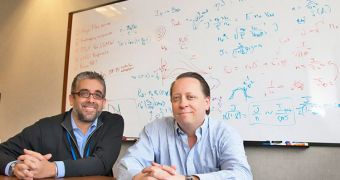A group of investigators in the Unites States may have found a way to address one of the obstacles that has been preventing the development in the field of nuclear fusion research for a long time. Their approach may finally allow some progress to be made towards gaining access to clean energy.
The work was carried out by physicists based at the US Department of Energy's (DOE) Princeton Plasma Physics Laboratory (PPPL). The solution the team came up with still needs to be proven by experiments, but early results are very encouraging.
Nuclear fusion is a very clean and abundant potential source of energy, which uses water as fuel. This is the most commonly available resource on Earth, since three quarters of the planet's surface are covered in it.
Fusion works by combining two hydrogen isotopes – deuterium and tritium. The process requires extreme temperature and pressure levels, and results in the creation of helium and vast amounts of energy. Basically, physicists need to recreate the conditions at the core of stars.
In the new study, the PPPL team analyzed very small, bubble-like islands that develop inside plasmas during experiments. These structures lead to a problem called the “density limit.” They cool the plasma down, preventing fusion reactors from operating at levels near maximum efficiency.
“The big mystery is why adding more heating power to the plasma doesn't get you to higher density. This is critical because density is the key parameter in reaching fusion and people have been puzzling about this for more than 30 years,” says PPPL principal research physicist, David Gates.
He carried out the study with PPPL postdoctoral fellow Luis Delgado-Aparicio, who is also a visiting scientist at the Massachusetts Institute of Technology's (MIT) Plasma Science Fusion Center.
They say that these islands collect impurities in the plasma. These impurities can easily disrupt the hot gases, causing the fusion process to fail; and they originated from particles that the plasma itself carves away from the walls of the tokamak (nuclear fusion reactor).
The researchers now plan to test their new theory on a tokamak called Alcator C-Mod, which is located at MIT. They will also be using the DIII-D tokamak at General Atomics, in San Diego, California.

 14 DAY TRIAL //
14 DAY TRIAL //